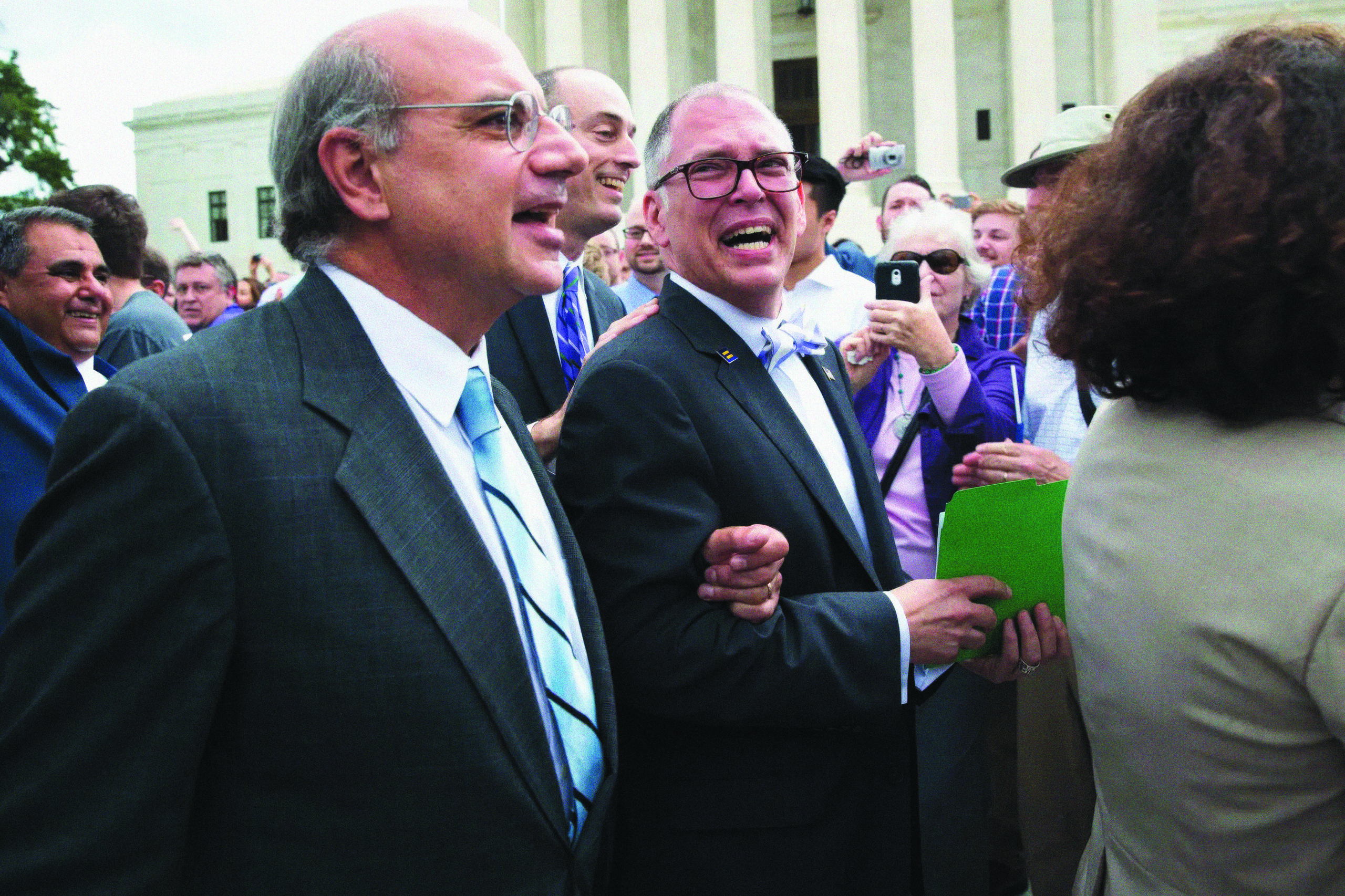Jim Obergefell shares how his love story became the catalyst for one of the most pivotal civil rights victories in U.S. history.
On June 26, 2015, Jim Obergefell sat in the U.S. Supreme Court, holding hands with his friends, surrounded by his legal team, waiting to hear the decision that would not only define his life but also reshape the landscape of marriage equality in the United States. When Justice Anthony Kennedy began reading the decision, Jim immediately sensed the weight of the moment. “My first reaction was, ‘We won,’” he recalls. “And then it sunk in—‘Yeah, Jim, we won.’”
“Holy hell. This decision, our decision to fight, had such enormous repercussions, such enormous impact on our community, on our nation,” he continues, still seemingly in disbelief a decade later.
That victory—Obergefell v. Hodges—became a landmark ruling, legalizing same-sex marriage nationwide and affirming the dignity of countless LGBTQ+ couples. But for Jim, the road to history began in an intimate and deeply personal place: his love for his late husband, John Arthur.
How the Love Story Turned into a Civil Rights Battle
Jim and John had been together for over 20 years when John was diagnosed with ALS. As his health deteriorated, the couple realized that their time together was running out. In a final act of love and defiance, they decided to marry. “We started talking about marriage in the mid-’90s, but we wanted marriage, not just a symbolic ceremony,” Jim explains.
When the Defense of Marriage Act (DOMA) was struck down in 2013, they saw their chance. With the help of friends and supporters, the couple flew from their home state of Ohio—where same-sex marriage was still banned—to Maryland, where they were legally wed on the tarmac of the airport, inside a medical transport plane.
“Just that experience of saying ‘I do’ and making our promises to each other—it changed us,” Jim remembers. “In some ways, nothing changed, but in the really important ways, everything changed,” he reflects, noting with a grin how they started constantly calling each other husband.
But Ohio refused to recognize their union. John was dying, and the state would not allow Jim’s name to be listed as his surviving spouse on his death certificate. Faced with this erasure, Jim took a step he never anticipated—he sued.
“I never imagined that my love story with John would lead to a Supreme Court case,” Jim says. “John and I weren’t activists. We weren’t out and about. Most of our friends were straight married couples. For us to end up doing this wasn’t something we ever dreamed about.” But in the face of discrimination, they fought—not just for their marriage, but for the rights of countless others.
Sadly, John never had the opportunity to see the outcome of their efforts, as he passed away on October 22, 2013. “Not surprisingly, [after the decision] my first thought was, ‘John, I wish you were here. I wish you could know our marriage can never be erased.’”
“And then it hit me, for the first time in my life as an out gay man, I felt like an equal American,” he says.
“When I walked out of the courtroom, the crowd just opened up before us. People were crying, cheering, trying to hug us, high-five us. It was electric,” Jim recalls.
That victory, however, came with unexpected weight. “People have called me Mr. Marriage, which I find a little weird,” Jim admits. “But I was so fortunate to be part of the fight for marriage equality. It wasn’t something John and I ever planned. It was just something that happened because we found ourselves in a spot where we had to ask ourselves: ‘What do we believe in? And what are we willing to fight for?’”

The Fight Continues
Though Obergefell v. Hodges was a monumental achievement, Jim warns that the battle for equality is far from over. “I always knew I’d be sharing my story for the rest of my life,” he says. “But now it feels different. Now, I tell my story not just with joy but with fear—fear that this story will be erased, our marriage will be erased, that our right to say ‘I do’ will be erased.”
With anti-LGBTQ+ sentiment rising in political spheres, Jim urges the community to remain vigilant. “We have taken some great steps forward, but with every bit of progress in our nation, we take steps back. If we don’t remind people where we’ve been, we’re going to lose it.”
Still, he remains hopeful. “I feel fortunate that I can be a voice for our community, that I can continue to fight for those who are marginalized and vulnerable because the LGBTQ+ community includes everyone—and we must fight for all of us.”
A Legacy of Love
Despite the weight of his role in history, Jim still sees his journey as deeply personal. “It still feels surreal to me that there’s a Supreme Court case with my name on it,” he reflects. “But we fought for our sense of love, our sense of family, and our ability to live, to exist, and to be treated with dignity.”
“There are millions of people out there fighting [once again] for what’s right, fighting to make the world better. And if nothing else, find hope in that,” urges Jim.
So when you’re asked to stand up for what’s right, say it with conviction, “I do.”
Photos courtesy of Rizzoli | This post was originally featured in Love Inc.'s V10 print issue. Find a retailer near you.













You must be logged in to post a comment.